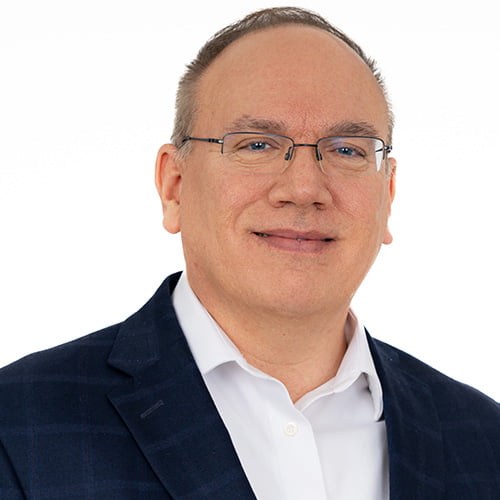Does Your Business Strategy Align with Demographics and Employee Expectations?

Future Facts. That’s what business futurist Daniel Burrus calls those trends that will absolutely happen. Technology will advance. Regulations will change. People will age. There’s nothing we can do to prevent these things from happening, which is why Burrus classifies these examples as “hard trends.”
We typically incorporate a trends discussion when we lead architecture, engineering, construction, environmental, and related firms through strategic planning at Stambaugh Ness. This process ensures that the strategic plan addresses those major trends – the hard, which will happen, and the soft, which might happen – so our clients aren’t entering their next planning cycle with blinders on.
Of course, it is not like every hard trend is concrete. Technology will advance, but how? Regulations will change, but how? And where? We can follow the data, identify the trends, and make educated assumptions.
With demographics, however, we have hard (and soft) data at our fingertips if we choose to use it. Unfortunately, the data isn’t exactly encouraging. For instance, here are some key data points to consider:
- 10,000 Baby Boomers turn 65 every day. Within two years, that number will be 12,000.
- 50% of the STEM (Science, Technology, Engineering, Math) workforce are women, yet only 16% of engineers, 17% of registered architects, and 10% of construction management professionals are women.
- Blacks/African Americans and Hispanics/Latinos (combined) represent roughly 35% of all college students, yet they represent just 15% of college engineering students.
- 85% of AEC firms responding to a recent Stambaugh Ness survey identified employee recruitment as a major challenge.
- 50% of AEC firms responding to the same survey identified employee retention as a major challenge.
- 40% of the construction workforce is expected to retire over the next decade.
- The average American Generation X worker (aged 43 to 57) hopes to retire at age 60.
- 44% of workers are considering quitting their jobs soon.
- An American worker aged 25-34 has a median tenure with their employer is 2.8 years.
- An American worker aged 35-44 has a median tenure with their employer is 4.7 years.
Planning for Reality vs. Hope
The statistics above paint a frightening picture of the workforce – now and in the future.
And suppose your strategic plans aren’t considering these data points. In that case, your strategy includes a healthy heaping of hope, as in you hope there will be enough quality candidates to meet your growth goals, you hope you will be able to retain your current employees, you hope your senior staff won’t retire before you’re ready for them to retire.
Our companies can have the loftiest, most aggressive plans for revenue growth, geographic expansion, and acquisition, but if we’re not looking at the realities of the workforce, we’re fooling ourselves.
A current Stambaugh Ness client has grown significantly over the past few years and has a workforce approaching 1,000 people. They are a great place to work, reflected in the fact that they have been a magnet for talent, fueling their growth through geographic expansion and service offerings. But despite this success, they, too, are facing workforce headwinds. Half of their employees have been on staff for fewer than two years, and three-quarters of their staff have a tenure under five years. Additionally, two-thirds of their staff fall under the Millennial and Z generations. As the statistics above tell us, average workers aged 44 and younger spend 4.7 years or less with their firms. Therefore, 75% of this firm’s workforce may be ready to move on very soon.
This is not a unique story but rather an increasingly common one. The demographic trends demonstrate that the War for Talent will continue well into the future with Baby Boomers retiring, Gen Xers approaching the age where they hope to retire, declining birth rates, and an upcoming cliff in college enrollment – which dropped significantly during the global pandemic.
Meeting Employee Expectations
The future is not all doom and gloom, of course. In fact, for AEC professionals, the future is bright. Many job openings will mean higher salaries, rapid career advancement, and opportunities far and wide. But for the business side of strategy to work, firms must pay attention to the people side. Some things that employees are looking for in their next job, according to research published by Gallup in 2022:
A significant increase in income or benefits (64%). Employees know companies are paying big salaries. Although salary/benefits weren’t as significant as other factors in prior years, employees now want to take advantage of the market and maximize their salaries. Is your compensation package competitive?
Greater work-life balance and better personal well-being (61%). Several recent studies demonstrate that increasing numbers of employees aren’t interested in working overtime. Corporate cultures are changing, and companies demanding significant amounts of overtime are losing quality employees. Furthermore, the remote work vs. hybrid work vs. in-office work conversation belongs here. What are the expectations of your current employees? And your future employees? Do you offer a model that will allow them to learn and advance while meeting their expectations for work-life balance?
The ability to do what they do best (58%) is about ensuring everyone is in the right seat on the bus. Ensure your employees are in positions that play to their strengths, avoid exposing their weaknesses or place them in areas where they are continuously uncomfortable. Professional development also falls under here as other research has found that 94% of employees would stay with an employer longer if that organization invested in their professional development.
Greater stability and job security (53%). It’s well-known that within the AEC and related industries, companies regularly experience peaks and valleys as workload rises and falls. Firms hire employees during good times, then lay them off when things slow down. More than half of potential employees not only want greater stability, but they want to make sure the workplace feels stable because if it doesn’t, they won’t stick around for long.
A diverse and inclusive organization of all types of people (42%). This is a significant challenge for AEC firms because the design and construction industry has a long legacy of underrepresenting women and minority groups. Employees want to see that a company has a real plan to expand diversity – not just in the rank and file but also in the executive suite and firm ownership. There is a lot of “DEI washing” taking place right now, whereby firms form a DEI committee to check a box, but substantial, real change doesn’t occur. Is your firm taking serious, meaningful steps to address this?
When overlaying the demographics with the workforce’s expectations, it is clear that any strategy needs to address these people-focused issues; otherwise, many growth and expansion goals will be unrealistic at best or more likely a pipe dream with no grounding in reality.
How is your strategic plan dealing with these hard trends and employee expectations?
Next Steps
Be sure to attend the Stambaugh Ness webinar Why People Need to be Part of Your Business Strategy, where we’ll cover trends in more depth, share examples of how AEC firms are approaching these challenges, and address how to be more strategic in approaching your firm’s greatest asset and true competitive advantage: your people.
And if you’re looking for strategic guidance for the coming year – and years – reach out to discuss how to be more intentional with strategy and better incorporate the people factor into your planning.



